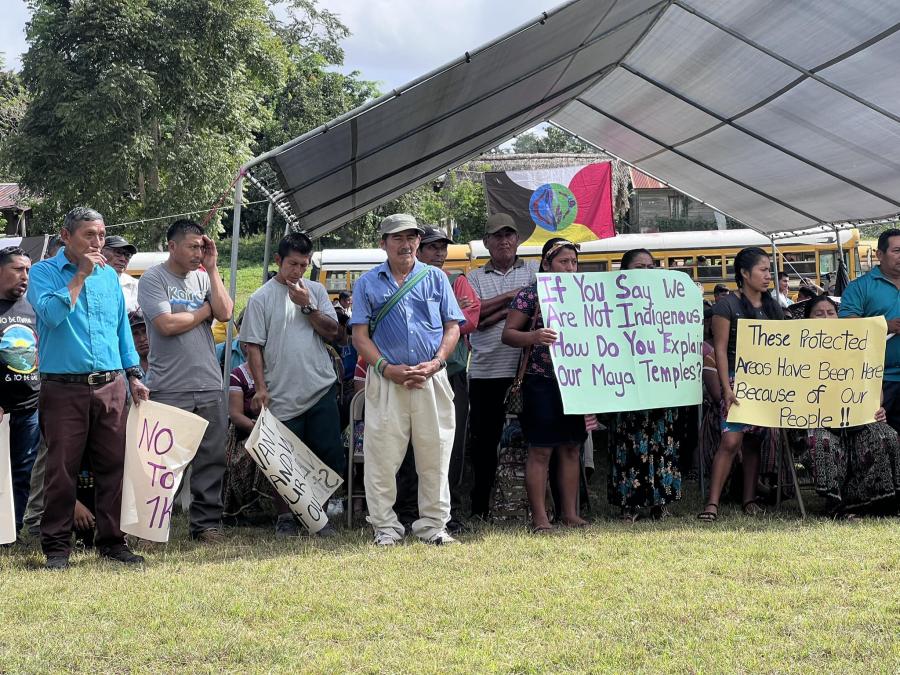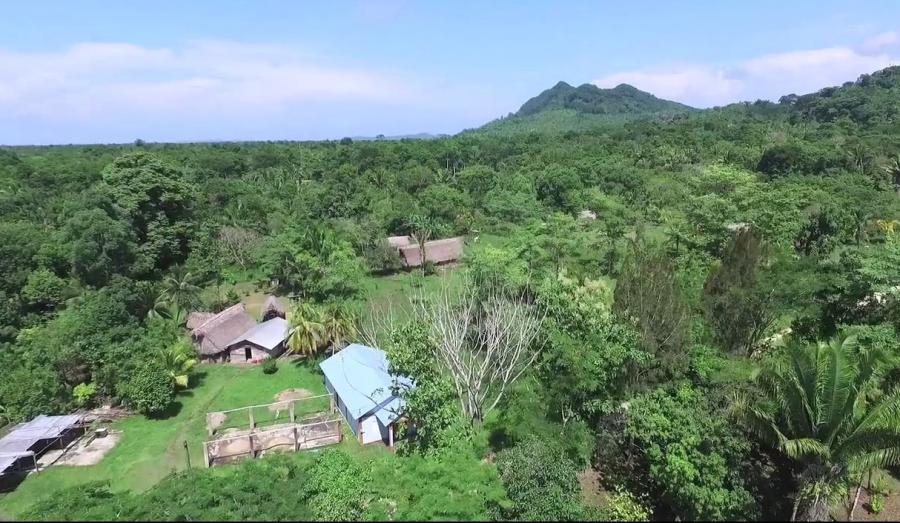"We the Garifuna are among the people who have been studied the most in Belize and perhaps even in all of Central America. Our cultural and intellectual property are collected by outsiders, dissertations and other works are produced by social scientists and others, and we gain nothing from it. Of course it is not by accident that we do not usually benefit from all this because it is hardly ever the intention. As a consequence we have learned to be suspicious of outsiders' motives.
"What sets the Garifuna Journey apart is that the approach is a truly collaborative one in which a partnership based on mutual respect and understanding was established between the filmmakers, Andrea Leland and Kathy Berger, and ourselves in the Garifuna community. Realizing that our true story needs to be told from our perspective and to our people, as well as to others, we came to perceive the collaboration as an opportunity to capitalize on the advantages that our panners from the outside have to offer. These include access to the necessary technology, experience in collecting the necessary material, access to the relevant institutions and agencies, as well as the ability to secure the required financial resources. We, on the other hand, felt a sense of ownership and were able to facilitate access to our people, institutions, and rituals and provide the necessary guidance and feedback at critical stages in the project.
"Our organization, the National Garifuna Council, is currently at a very important stage in its development. We recently completed work on the ground floor of a multipurpose building where we will, among other things, establish a documentation center and develop and house an archival collection on behalf of the Garifuna Nation. We believe that the material collected, which the filmmakers intend to return to the Garifuna community, will be a major contribution to this center where it will be available for use by students, scholars, and other interested persons. It will also be the venue for talks, symposiums, and workshops dealing with Garifuna history, language, culture, and spirituality, areas in which there is strong interest that in part, is generated by the process of Garifuna Journey project. The Council also hopes to play a key role in promoting the use of the documentary as a tool for teaching various aspects of Garifuna history and life especially in schools in our communities."
-Roy Cayetano, President, National Garifuna Council
The Garifuna in Belize have initiated a cultural retrieval movement as younger Garifuna are moving away from their traditions. In 1994, filmmaker Andrea Leland and photographer Bob Richards proposed to collaborate with the National Garifuna Council of Belize in documenting aspects of the Garifuna culture and collecting oral histories through audio, video, and still photography as directed by council members. When co-producer, Kathy Berger, joined the project, the following goals were established: to return all unedited video footage to the Garifuna for their archives, to develop a multimedia traveling exhibit co-curated by Garifuna to ensure first voice authenticity, and to coproduce a documentary video with accompanying study guide.
Collaboration between the Garifuna community and the video producers was an essential component of the project and took many forms. Garifuna tradition bearers, activists, and scholars guided the collection of materials in Belize and in some cases, conducted the interviews and operated the camera. During this production phase, the advantages of this `outsider/insider' collaboration became clear. When the outside producer came in with a fresh eye and asked questions about common cultural practices, the Garifuna were, at times, surprised at the outsiders interest in everyday cultural expressions. The extraordinary exchange that took place subsequently resulted in greater understanding and altered perspectives for both outsider and insider.
By the same token, when the thatching of a temple was being videotaped in Barranco, insider associate producers allayed any negative feeling participants had towards Leland videotaping ritual events. In fact they said, "we all have a job here, some have to thatch the temple, others have to cook, and Leland has to videotape, that is her job!" When the dugu ritual needed to be videotaped and the American crew was unable to travel to Belize, videotape was mailed to Belize and Carmen Palacio documented the event. This elaborate ceremony which honors the ancestors is central to the spiritual beliefs of the Garifuna. Footage was brought back to Chicago where it was logged and transcribed-assisted by interns from Cultural Survival. Transcripts were printed, corrected by Garifuna, and finally returned to Belize to represent an important, early component of the Garifuna archives being developed there.
Sixty hours of tape were gradually edited into the 46 minute video documentary, `The Garifuna Journey.' This process also involved a high degree of collaboration in person and via e-mail with Garifuna and academic consultants on script content, in the edit room, in the recording of a drumming sound track, and finally, in writing and recording the narration. The video rough-cut was sent to Garifuna communities in Belize, Boston, New York, Los Angeles, and to academic consultants for comment. Feedback was reviewed, considered, and the script revised.
The documentary, completed in February 1998, premiered at the Field Museum of Chicago as part of the African Heritage Festival. The Garifuna Journey project was highlighted and used as a model to demonstrate the collaborative efforts between outsiders and insiders in documenting a culture. Garifuna associate producer Roy Cayetano, Sebastian Cayetano, and Isabel Cayetano came from Belize, Felix Miranda traveled from New York, and Barbara Flores, currently living in Chicago, all participated in several workshops focusing on the collaboration and its implications. In addition, the Chicago Garifuna community sang, danced, prepared foods, and demonstrated techniques in cassava preparation and drumming.
The exhibit, co-curated by Garifuna, was originally developed and presented in Chicago, then traveled to Cambridge, Massachusetts, and is now scheduled to be shown in Evanston, Illinois beginning November, 1998. The exhibit changes every time it travels as the Garifuna community in each new locale make their own contributions of artifacts and performances that accompany a selection of Bob Richards' photos.
Finally, producers Andrea Leland and Kathy Berger and Garifuna members have been invited to present a workshop on the collaborative process and screen the documentary at the Caribbean Studies Conference in Antigua in May. As the project becomes more public, the collaborators will have a clearer idea of the impact it has had on the Garifuna communities in the United States and abroad.
This project succeeded because of the trust that developed between outsiders and insiders over the course of four years, the close collaboration throughout all phases of the project, and ultimately, the commitment to assist the Garifuna community as they strive to ensure that their culture and history remain a `living legacy.'
Article copyright Cultural Survival, Inc.



